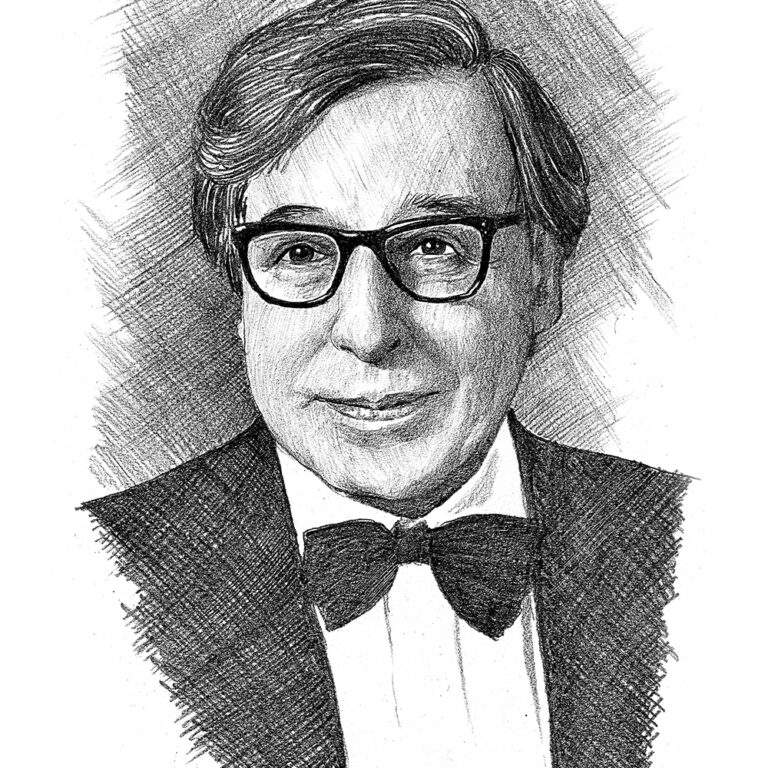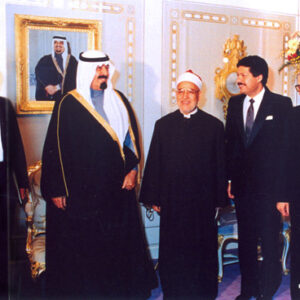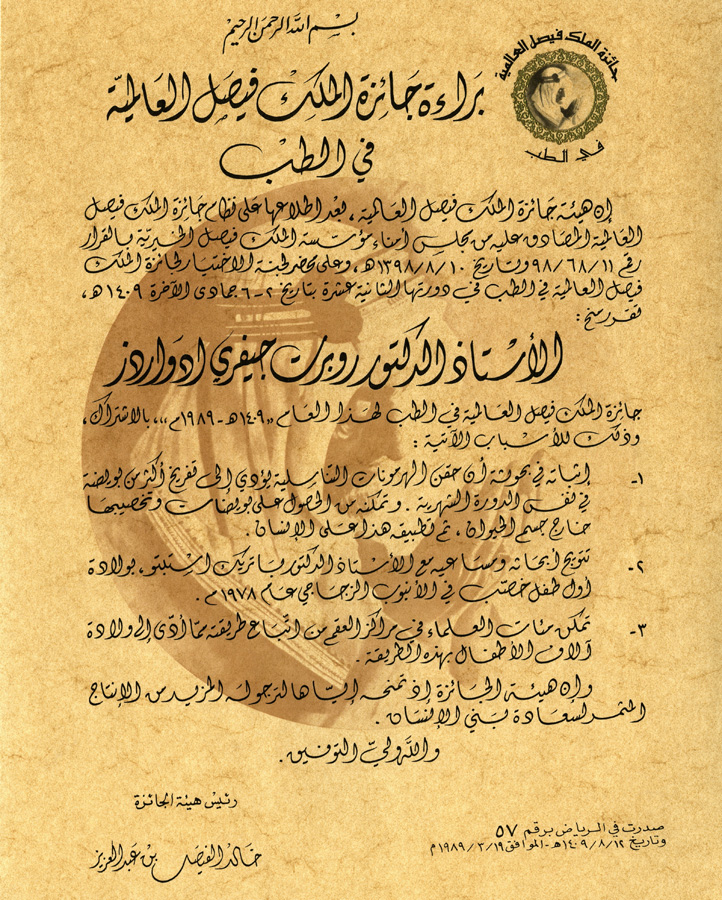

Professor Robert G. Edwards
King Faisal Prize in Medicine 1989 Laureate
Topic: "Infertility"
The complex ethical issues involved in establishing human life must be handled with the most extreme delicacy

Robert Edwardsobtained his B.Sc. from the University of Wales, Bangor and a Ph.D. from the Institute of Animal Genetics at the University of Edinburgh. He joined the University of Cambridge in 1963, then served as a visiting scientist at several prestigious universities including Johns Hopkins University in 1965, the University of North Carolina in 1966, and the Free University in Brussels in 1984. In 1985, he became Professor of Reproduction at Cambridge University. Upon his retirement in 1989, he became a Distinguished Professor at Cambridge. He was also an Extraordinary Fellow of Churchill College.
Professor Edwards was the scientist who developed in vitro fertilization (IVF), a technology that has revolutionized the treatment of infertility. He carried out pioneering research on human in vitro fertilization in collaboration with the late Patrick Steptoe. This culminated in the first successful birth of a “test tube baby”, Louise Brown, on 11 July 1978. This milestone event in the fight against infertility captured the imagination of the public throughout the world, and focused attention on the importance of basic research in human reproduction. Professor Edwards’ studies permitted hundreds of other infertility centers around the world to establish IVF clinics. Refinements in technology increased pregnancy rates and it is estimated that by 2020 more than 8 million babies have so far been born by IVF. Professor Edwards’ seminal research also laid the groundwork for further innovations in the treatment of infertility, such as intracytoplasmic sperm injection, embryo biopsy and stem cell research.
With a background of training in endocrinology, immunology and developmental genetics, he initiated studies in 1954 on reproductive physiology in mice. In 1957, he showed that exogenous gonadotropins could induce superovulation. With the aim of finding how to fertilize human ova outside the body, he turned his attention to the study of isolated human oocytes. Unfortunately, he found that they behave differently from those of rodents so he was obliged to turn to the oocytes that mature inside the human ovary shortly before they are released at ovulation. The necessity for him at that point to seek clinical help led, in the early 1960′s, to a remarkably fruitful collaboration with Professor Patrick Steptoe, which resulted 10 years later in the birth of the first “test-tube baby”.
Professor Edwards authored and co-authored hundreds of research papers and scientific reviews, in addition to 22 books, many of which were reprinted several times. His groundbreaking accomplishments in the field of human reproduction earned him worldwide recognition. Professor Edwards received 15 prestigious prizes, including the renowned Axel Munthe Award as well as several medals. He was also awarded Honorary Doctorates from several major universities.
He was an elected Fellow of the Royal Society (London) and the Royal College of Obstetricians and Gynecologist, Honorary member of the Royal College of Physicians, and Life Fellow of the Australian Fertility Society. He was appointed Captain of the British Empire (CBE) by the Queen of Britain and Honorary Citizen of Bordeaux in France. His scholarship is further attested by an impressive list of honorary lectureships and visiting professorships.
This biography was written in the year the prize was awarded.
- He co-founded the European Society of Human Reproduction and Embryology, and its three journals, Human Reproduction, Molecular Human Reproduction, and Human Reproduction Update.
- He founded the journal Reproductive BioMedicine Online in 2000.
- In 2007, he was ranked 26th among the Daily Telegraph’s list of 100 world geniuses.
- He received many awards and honors including:
- Lasker Medical Research Award in 2001.
- Nobel Prize in Physiology or Medicine in 2010.
- Knighthood in 2011.
- Keys of San Diego in the USA.
- Honorary Membership of the British Fertility Society.
- Professor Robert Geoffrey Edwards passed away in England on 10/4/2013.



